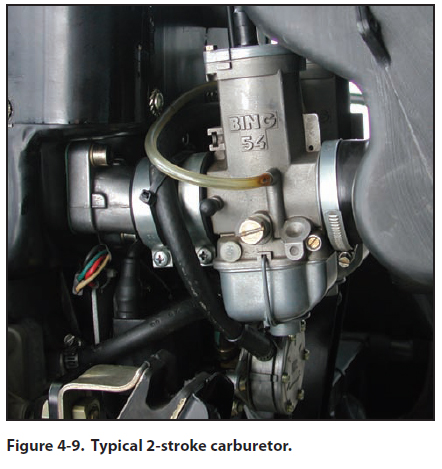|
Chapter 4 — Powerplants
Two-Stroke Carburetor Jetting
Carburetors are normally set at sea-level pressure,
with the jets and settings determined by the manufacturer.
[Figure 4-9] However, as altitude increases, the density of air entering the carburetor decreases, while
the density of the fuel remains the same. This creates
a progressively richer mixture, same fuel but less air,
which can result in engine roughness and an appreciable
loss of power. The roughness is usually due to
spark plug fouling from excessive carbon buildup on
the plugs. Carbon buildup occurs because the excessively
rich mixture lowers the temperature inside the
cylinder, inhibiting complete combustion of the fuel.
This condition may occur at high-elevation airports and
during climbs or cruise flight at high altitudes. To maintain
the correct fuel-air mixture, you can change the
main jets and the midrange jets setting for base operations
at a high density altitude airport. Operating from
low altitude airports and climbing to altitude where the
mixture becomes rich for short periods is OK.

Operating an aircraft at a lower altitude airport with
the jets set for higher altitudes will create too lean of
a mixture, heat up the engine, and cause the engine
to seize. The pilot must be aware of the jetting for
the machine to adjust the mixture. Consult your POH
for specific procedures for setting jets at different altitudes.
|

